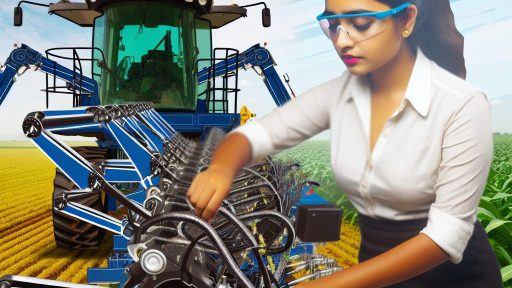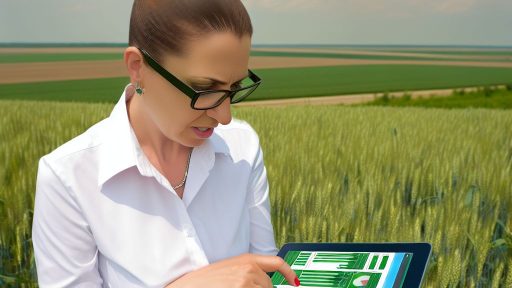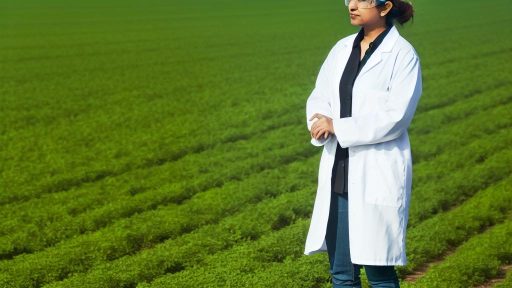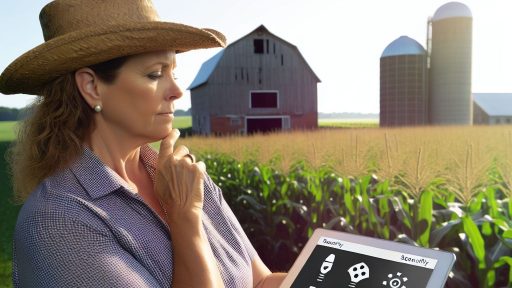Overview of Precision Agriculture and Its Importance
Defining Precision Agriculture
Precision agriculture, also known as smart farming, leverages technology to enhance crop production.
This method utilizes data analysis to improve farming practices.
Farmers apply precision agriculture techniques for increased efficiency and higher yields.
The Significance of Precision Agriculture
Precision agriculture plays a crucial role in modern farming.
It helps farmers make informed decisions based on accurate data.
This approach reduces waste and optimizes resource use.
Environmental Benefits
One of the primary advantages of precision agriculture is its positive environmental impact.
Using less water and fewer chemicals lowers the risk of pollution.
Additionally, this method improves soil health over time.
Economic Advantages
Precision agriculture offers significant economic benefits for farmers.
By maximizing outputs, farmers see higher profits.
This technology also minimizes labor costs through automated systems.
Technological Integration
Modern technologies are integral to precision agriculture.
Drones, sensors, and GPS technology enable real-time monitoring of crops.
This integration ensures that farmers respond swiftly to changes in crop conditions.
Transform Your Agribusiness
Unlock your farm's potential with expert advice tailored to your needs. Get actionable steps that drive real results.
Get StartedEnhancing Crop Management
Precision agriculture enhances overall crop management practices.
Farmers can track growth patterns and identify diseases early.
This proactive approach leads to better crop quality and yields.
Introduction to Drones in Agriculture
Drones have transformed modern agricultural practices significantly.
Farmers are now utilizing aerial technology to enhance productivity.
This innovative tool allows for efficient monitoring of crops.
The integration of drones into farming provides numerous benefits.
Enhancing Crop Monitoring
Drones offer real-time data collection from above fields.
This capability improves crop monitoring accuracy.
Farmers can identify problem areas quickly and efficiently.
Consequently, timely interventions can mitigate potential losses.
Precision Agriculture Techniques
Precision agriculture relies heavily on drone technology.
Drones provide precise data on soil conditions and crop health.
This data empowers farmers to make informed decisions.
For instance, targeted fertilization becomes simpler and more effective.
Cost Efficiency and Resource Management
Utilizing drones can lead to significant cost savings for farmers.
They reduce labor costs associated with field inspections.
Moreover, drones minimize resource wastage through accurate application.
This efficient resource management leads to healthier crops.
Farmer Accessibility to Technology
Drones have made advanced technology accessible to all farmers.
Smallholder farmers benefit greatly from this technology.
They can now compete with larger agricultural enterprises.
The ease of use paves the way for broader adoption among farmers.
Cost Efficiency: How Drones Reduce Operational Costs
Drones significantly reduce labor expenses in agriculture.
Showcase Your Farming Business
Publish your professional farming services profile on our blog for a one-time fee of $200 and reach a dedicated audience of farmers and agribusiness owners.
Publish Your ProfileFarmers can perform tasks quickly without extensive manpower.
This reduction allows farmers to allocate resources more effectively.
Drones enable precise application of fertilizers and pesticides.
This precision minimizes waste and enhances productivity.
As a result, farmers save money on unnecessary inputs.
Drones provide high-resolution aerial imagery of crops.
This data allows for better monitoring of crop health.
Farmers can make informed decisions based on real-time information.
Regular drone flights provide consistent crop tracking.
Farmers can detect issues early and respond promptly.
Tackling problems early prevents losses and reduces costs.
Drones require less fuel compared to traditional machinery.
This efficiency translates into significant cost savings.
Farmers enjoy lower operational costs while maintaining productivity.
The integration of drones simplifies farm management tasks.
Farmers can oversee multiple fields from a single operation.
This effectiveness enhances overall farm efficiency and savings.
Explore Further: Autonomous Machinery In Modern Farming
Enhanced Field Mapping and Monitoring
Precision in Field Mapping
Drones significantly improve precision in agricultural mapping.
They capture high-resolution aerial images of farmlands.
This data allows farmers to create detailed maps.
As a result, they can accurately assess soil properties.
Moreover, drone technology ensures timely information updates.
This leads to better decision-making regarding crop management.
Real-Time Monitoring Capabilities
Drones provide real-time monitoring of crop health.
They detect issues like pest infestations promptly.
Farmers can respond to challenges more quickly.
This immediate feedback enhances overall crop yields.
Furthermore, drones can monitor weather-related impacts.
This information supports more effective irrigation management.
Data Analysis and Crop Management
Drone data enables thorough analysis of field conditions.
Farmers can identify areas needing specific attention.
For instance, they may focus on underperforming crop sections.
This targeted approach optimizes resource allocation.
Moreover, data visualization tools help interpret findings easily.
Farmers gain insights that drive more effective crop strategies.
Cost-Effective Solutions
Utilizing drones reduces the need for manual labor.
This can lower operational costs significantly.
Additionally, drones cover large areas in a short time.
This efficiency can lead to improved profit margins.
Showcase Your Farming Business
Publish your professional farming services profile on our blog for a one-time fee of $200 and reach a dedicated audience of farmers and agribusiness owners.
Publish Your ProfileFarmers spend less time analyzing data and more on implementation.
Ultimately, this enhances overall productivity.
Uncover the Details: Integrating Controlled Environment Agriculture into Traditional Farming
Real-Time Data Collection and Analysis for Crop Health
Importance of Immediate Insights
Real-time data collection significantly enhances crop management practices.
Farmers gain immediate insights into their fields’ conditions.
This information helps in making swift decisions that improve yields.
Moreover, timely data can reduce input costs effectively.
Utilizing Drone Technology
Drones allow for comprehensive aerial surveys of agricultural land.
They capture high-resolution images for detailed analysis.
This technology provides insights into crop health and growth patterns.
Farmers can monitor changes quickly and efficiently.
Crop Health Monitoring
Drones equipped with multispectral cameras assess crop health accurately.
They detect variations in plant health based on light reflectance.
Farmers can identify stress areas, such as drought or disease, easily.
Understanding these issues enables proactive management strategies.
Efficient Resource Allocation
With real-time data, farmers can allocate resources more effectively.
They can pinpoint areas needing water, fertilizers, or pesticides.
This targeted approach minimizes waste and boosts productivity.
Additionally, it supports environmental sustainability efforts.
Data Integration for Enhanced Decision-Making
Drones enable the integration of data from multiple sources.
This includes weather forecasts, soil conditions, and crop performance.
Such integration provides a complete picture of farm health.
Farmers can utilize this data to optimize their farming practices.
See Related Content: Troubleshooting Common Issues With Automated Machinery
Targeted Application of Inputs
Efficiency in Resource Utilization
Drones enhance the precision of input application in agriculture.
This technology allows farmers to target specific areas of a field.
As a result, they can reduce the amount of fertilizers used.
This approach minimizes waste and lowers costs effectively.
Consequently, farmers see an increase in overall yield quality.
Reduced Environmental Impact
Using drones for applying pesticides leads to less chemical exposure.
This method decreases the risk of runoff into surrounding ecosystems.
Moreover, targeted application reduces the number of chemicals entered into the environment.
Farmers can maintain a safer habitat for beneficial insects and wildlife.
Timely Intervention
Drones enable farmers to respond quickly to crop health issues.
With real-time monitoring, they can identify problem areas fast.
This allows for immediate action before issues escalate.
Consequently, crops can recover quicker, preserving yield potential.
Data-Driven Decision Making
Drones collect valuable data to optimize input application.
Farmers can analyze the collected data to make informed decisions.
Precise data helps in customizing input needs for different field zones.
Showcase Your Farming Business
Publish your professional farming services profile on our blog for a one-time fee of $200 and reach a dedicated audience of farmers and agribusiness owners.
Publish Your ProfileThis leads to more effective management strategies in agriculture.
Explore Further: A Farmer’s Guide To Utilizing Drones In Agriculture
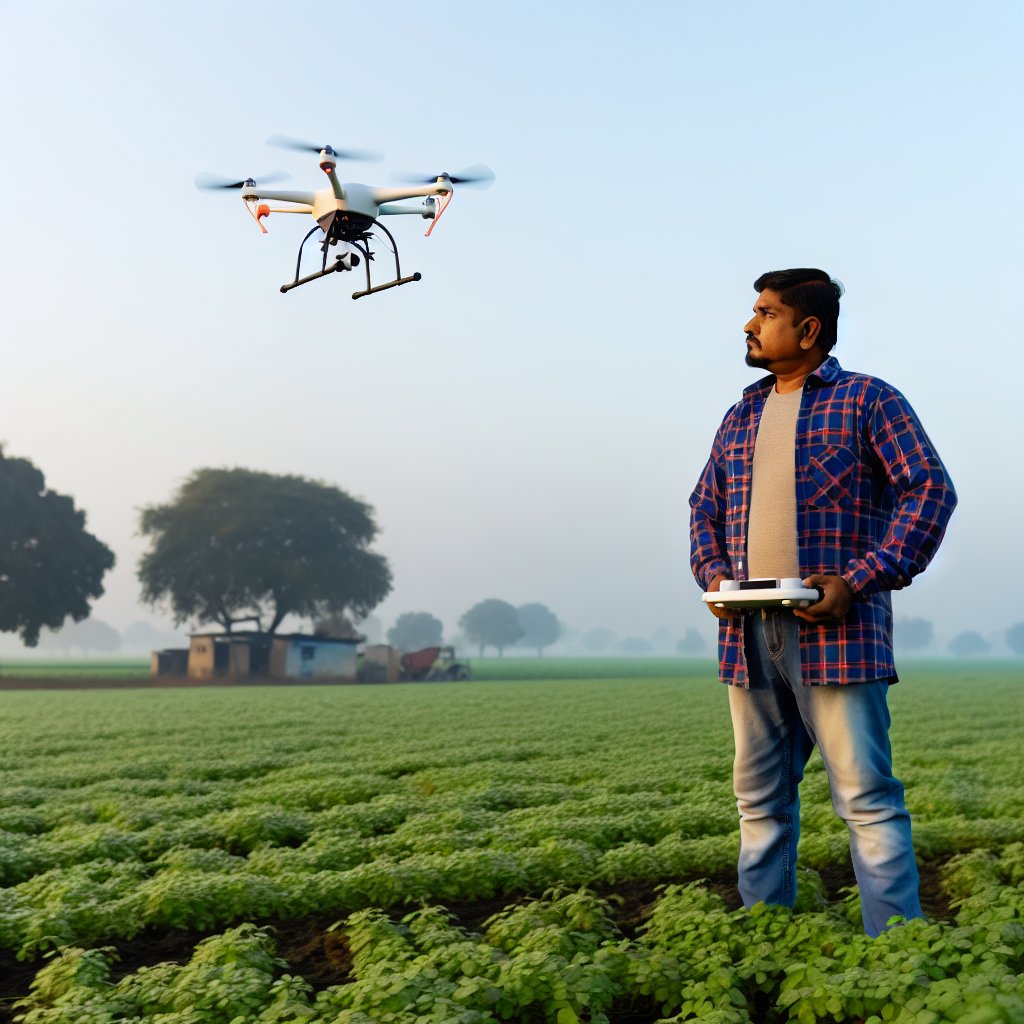
Increased Yield and Productivity Through Precision Farming
Enhanced Crop Monitoring
Drones provide real-time monitoring of crops.
This helps farmers identify issues early.
Early detection can prevent larger problems.
Using drones, farmers can cover vast areas quickly.
They capture detailed images of crop health.
Data-Driven Decision Making
Drones collect valuable agronomic data.
Farmers use this data for informed decisions.
Data can highlight areas needing more attention.
Using analytics, farmers can optimize inputs.
This precision reduces fertilizer and pesticide usage.
Improving Resource Management
Drones assist in efficient water management.
They help monitor irrigation systems accurately.
Farmers can adjust water usage based on aerial insights.
Better water management leads to healthier crops.
It also reduces waste and improves sustainability.
Precision Planting
Drones facilitate precision planting techniques.
They can map fields accurately for optimal spacing.
This maximizes sunlight and nutrient access for plants.
Precision planting can lead to higher yields.
Consistent plant health enhances overall productivity.
Streamlined Harvesting Processes
Drones provide data that aids in efficient harvesting.
Farmers can identify the best times to harvest crops.
This results in improved quality and yield.
Moreover, targeted harvesting reduces labor and costs.
Finally, it ensures freshness for market delivery.
Environmental Benefits
Reduced Chemical Runoff
Drones enhance precision agriculture by minimizing chemical usage.
Farmers can apply fertilizers and pesticides more accurately.
This targeted approach significantly reduces runoff into nearby water sources.
Consequently, it helps maintain the quality of local ecosystems.
Moreover, fewer chemicals applied leads to healthier soil and crops.
This practice fosters a safer food supply for consumers.
Minimized Soil Compaction
Soil compaction negatively impacts crop production and water absorption.
Drones mitigate this issue by allowing for aerial applications.
As a result, farmers reduce heavy machinery use on fields.
This preservation of soil structure promotes sustainable farming practices.
In turn, it enhances overall agricultural productivity.
Furthermore, healthy soils retain moisture better during droughts.
This leads to increased resilience against climate change.
Showcase Your Farming Business
Publish your professional farming services profile on our blog for a one-time fee of $200 and reach a dedicated audience of farmers and agribusiness owners.
Publish Your ProfileChallenges and Limitations of Drone Use in Agriculture
Regulatory Restrictions
Drones in agriculture face various regulatory challenges.
Governments enforce strict rules on airspace usage.
Farmers must comply with local and national regulations.
Failure to adhere can result in hefty fines.
Moreover, obtaining necessary permits can be time-consuming.
Technical Limitations
Drones can experience technical failures during operations.
Battery life may limit operational hours for farmers.
This could hinder data collection over large areas.
Additionally, drones require maintenance to ensure efficiency.
Technological malfunctions may lead to data loss.
Cost Considerations
Initial investment costs for drones can be significant.
Farmers must consider software and training costs as well.
The financial barrier can deter small-scale farmers.
Maintenance and operational costs also accumulate over time.
Evaluating return on investment is crucial for adoption.
Data Management Challenges
Drones generate vast amounts of data for analysis.
Farmers may lack the expertise to interpret this data effectively.
Data integration with existing farm management systems remains difficult.
This creates challenges in combining drone data with other sources.
Without proper analysis, farmers may miss critical insights.
Environmental Factors
Weather conditions can negatively affect drone operations.
Strong winds may increase the risk of crashes.
Rain and excessive moisture can damage equipment.
Farmers must carefully monitor weather forecasts before flying.
Environmental factors limit drone usage during specific seasons.
Future Trends: The Evolving Role of Drones in Farming
Innovative Applications of Drone Technology
Drones are changing the landscape of precision agriculture significantly.
Farmers utilize drones for crop monitoring and analysis effectively.
This technology provides real-time data for informed decision-making.
Furthermore, drones enhance the efficiency of pest and disease management.
Farmers can identify issues early and respond promptly, reducing crop loss.
Integration with Other Technologies
As drones evolve, they increasingly integrate with other technologies.
For instance, drones work seamlessly with satellite imagery and AI analytics.
This collaboration improves the accuracy of agricultural assessments.
Moreover, the combination allows for precision irrigation and fertilization.
Consequently, this integration boosts overall farm productivity and sustainability.
Regulatory Changes and Challenges
The regulatory landscape for drone use is undergoing significant changes.
Governments worldwide are developing policies to support drone adoption.
Communication with regulatory bodies is essential for compliance.
Nevertheless, challenges still exist concerning drone insurance and liability.
Addressing these challenges will be crucial for widespread drone adoption.
Showcase Your Farming Business
Publish your professional farming services profile on our blog for a one-time fee of $200 and reach a dedicated audience of farmers and agribusiness owners.
Publish Your ProfileThe Future of Drone Technology in Agriculture
The future of drones in agriculture looks promising and innovative.
Advancements in battery technology will enable longer flight times.
Additionally, enhancements in data processing will improve analysis speed.
Farmers will gain deeper insights into crop health and soil conditions.
As a result, they can make proactive decisions to enhance yields.
Additional Resources
FARMER PERCEPTIONS OF PRECISION AGRICULTURE …
Precision Agriculture: Benefits and Challenges for Technology …

